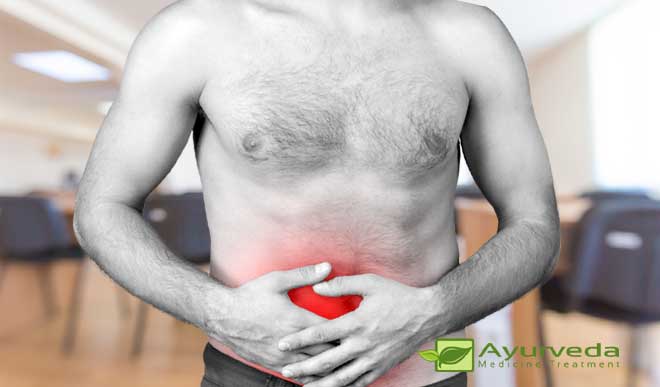
Colic pain refers to a paroxysmal abdominal pain. It can be rather acute. There are many types of colic pain depending on the cause of the pain.
Colic pain is known as Shula in Ayurvedic terminology. Colic pain is caused due to the predominance of vayu.
Colic pain can be a silent invader; it can assume a serious form slowly and over a period of time. On the other hand, colic pain can strike suddenly.
The pain can spread to other portions of the body. The other vulnerable parts are the genital organs and the vascular region.
It is important that during such acute situations, each affected organ should be treated separately.
Causes of Colic pain
The common causes of colic pain are as follows: Liver or ovary inflammation; gastric and duodenal ulcer; intestinal spasm; kidney stone; gall-stone; and appendicitis.
Colic pain symptoms
The symptoms vary according to body or organ affected.
However, here are the common symptoms:
The patient will suffer from constipation. It may, at times, assume a chronic form;
There may be nausea and vomiting as well.
First, Address Constipation
Yes! To enjoy a speedy recovery from the condition, one should deal with constipation on a war footing. Resolve constipation once and for all. Practice daily and regular movement of the bowels.
In fact, constipation is one of the primary causes of many other serious diseases. Hence, the children should be taught to have regular bowel movements so that they do it as a habit as they grow in age.
Constipation alleviates Vayu, and this leads to colic pain and also many other ailments.
If the patient is suffering from constipation (chronic or otherwise), tender him/her castor oil enema or a mild purgative.
What not to eat
Beans, fried items and pulses should be strictly avoided.
Other important points
It is mandatory and absolutely necessary that the patient is not allowed to go through any form of mental strain, stress or worry. These psychic states aggravate vayu which, in turn, is one of the main causes of this ailment.
Don’t do any hard physical activity (including sexual intercourse) immediately after taking the major meals.
Instead, practice the yogic posture — Vajrasana – immediately after taking the major meals or at least after supper.
Ayurvedic treatment for Colic pain
Ayurveda has three very effective medications for patients suffering from colic pain. These medicines are also prescribed in duodenal pain which often accompanies and is at times the cause and the effect of colic pain.
These Ayurvedic medicines are Abhraka bhasma, Lasuna (garlic) and Hing besides Lasunadi vati; and Hingvashtaka churna as well as Mahashankha vati and Shankha bhasma.
Abhraka Bhasma
Abhraka bhasma provides relief in all types of colic pain.
The dose: 250 gram mixed with honey four times daily.
Lasuna and Hing
Lasuna (garlic) and Hing taken in their raw forms delivers the goods in patients suffering from colic pain as well as duodenal ulcer. Both are ideal natural medications for many other ailments as well.
Lasunadi Vati
Lasunadi vati contains garlic (lasuna).
The dose: Two tablets four times daily.
Hingvashtaka Churna
The main ingredient of Hingvashtaka churna is Hing. It is recommended for patients suffering from colic pain.
The dose: One teaspoonful mixed with half a teaspoonful of water thrice daily.
Mahashankha Vati
Mahashankha vati contains Shankha bhasma as a primary ingredient.
The dose: Two tablets mixed with a cup of warm water four times daily.
Shankha Bhasma
Shankha bhasma is the commonly prescribed Ayurvedic medication for patients suffering from colic pain.
The dose: Mix 325 gram of the medicine with a cup of warm water and give to the patient four times daily.

Leave a Reply